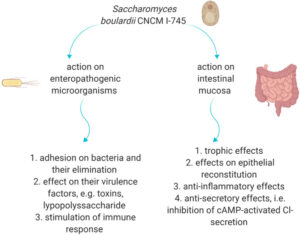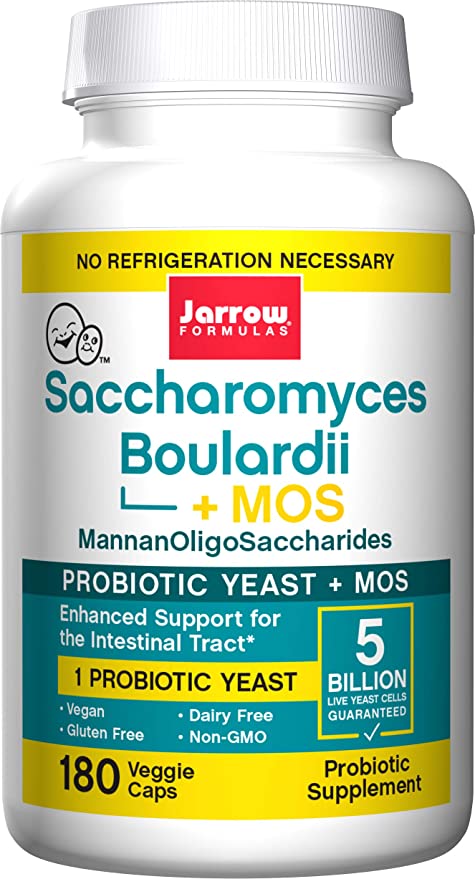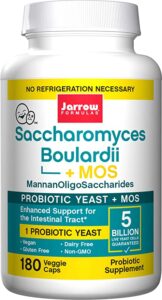Welcome to my blog post discussing the probiotic saccharomyces boulardii.
You may also be interested in the section I have dedicated to summarising some of the best supplements available by clicking here. Examples of these blog posts:
- Psychobiotics: Probiotics For Mood And Mental Health: click here.
- Have You Heard About PEA (Palmitoylethanolamide): click here. (will be of interest for those with histamine intolerance!)
- What Are The Health Benefits Associated With Ashwagandha?
What Is Saccharomyces Boulardii?
Rhodiola rosea, known as “golden root” or “roseroot”, is a herb that belongs to the plant family Crassulaceae, is worldwide a botanical adaptogen. Adaptogen means it is able to help mitigate the effects of physical and chemical stress.
Modern pharmaceutical research identified more than 140 compounds isolated from Rhodiola species, including flavones, coumarins, volatiles, anthraquinone and organic acids.
It is grown at high altitudes and northern latitudes. Due to its purported adaptogenic properties, it has been studied for its performance-enhancing capabilities in healthy populations and its therapeutic properties in a number of clinical populations
What Are The Benefits Of Saccharomyces Boulardii?
- Antibiotic associated diarrhoea
- Assists the eradication of infections
- Leaky gut
- Improved Enzyme Function
- H. Pylori
- C. difficile
- Candida
- Dyslipidemia
- Small intestine bacterial overgrowth
- Multiple sclerosis
How Does Saccharomyces Boulardii Work?

Curr Microbiol (2020);77(9):1987-1996
- An action on enteropathogenic microorganisms (adhesion of bacteria and their elimination or an effect on their virulence factors: toxins etc.)
- A direct action on the intestinal mucosa (effects on the integrity of the gut lining, anti-inflammatory, and immunomodulating properties)
Now, let’s look at these in a little more detail.
Saccharomyces Boulardii and Antibiotic Associated Diarrhoea
A systematic review with meta-analysis concluded “This meta-analysis confirms that S. boulardii is effective in reducing the risk of antibiotic-associated diarrhoea in children and adults.” (1)
Saccharomyces Boulardii And IBD
The number of studies of S. boulardii as treatment for IBD is limited. Furthermore, the existing trials have small populations and short duration.
IBD is caused by an inappropriate immune response to gut microbiota. Treatment options could therefore be prebiotics, probiotics, antibiotics and/or fecal transplant. In this review, we have looked at the evidence for the yeast S. boulardii as a treatment option
We do not have enough evidence to prove the effect of S. boulardii in IBD. Saccharomyces boulardii is, however, a plausible treatment option in the future, but more placebo-controlled clinical studies on both patients with ulcerative colitis and Crohn’s disease are needed (2).
Saccharomyces Boulardii And Infections
in the case of diseases associated with the use of antibiotics or chronic diarrhea, Saccharomyces boulardii CNCM I-745 can restore the intestinal microbiota faster. The interaction of Saccharomyces boulardii CNCM I-745 with the innate immune system have been recently demonstrated thus opening up a new therapeutic potential of this yeast in the case of diseases associated with intestinal infections but also other pathologies associated with dysbiosis such as inflammatory diseases (3).
Another paper (4) concluded:
The different molecular and immunological mechanisms investigated in the experimental studies prove the already confirmed very good clinical efficacy of S. boulardii in infectious diarrhea caused by pathogens such as bacteria, viruses, and fungi
Saccharomyces Boulardii And Leaky Gut
Its probiotic activity has been elucidated as a conjunction of multiple pathways, ranging from improvement of gut barrier function, pathogen competitive exclusion, production of antimicrobial peptides, immune modulation, and trophic effects (5)
Saccharomyces Boulardii And Enzyme Function
The administration of polyamines or S. boulardii CNCM I-745 enhances the expression of intestinal digestive enzymes as well as nutrient uptake transporters.
As an additional direct effect, S. boulardii CNCM I-745 secretes certain enzymes, which enhance nutrient acquisition for the yeast and the host. The increased availability of digestive enzymes seems to be one of the mechanisms by which S. boulardii CNCM I-745 counteracts diarrhoea (6).
People with certain enzyme deficiencies may profit from its administration
Saccharomyces Boulardii And H. Pylori
Our meta-analysis shows that S boulardii supplementation on standard eradication therapy significantly increased H pylori eradication rates and reduced the incidence of total side effects and some gastrointestinal adverse effects during eradication therapy.
Saccharomyces Boulardii And leaky Gut
Via multiple mechanisms of action implicated in intestinal barrier function, S. boulardii has beneficial effects on altered intestinal microbiota and epithelial barrier defects in different pathologies. The well-studied probiotic yeast S. boulardii plays a crucial role in the preservation and/or restoration of intestinal barrier function in multiple disorders. This could be of major interest in diseases characterized by alterations in intestinal barrier function (9).
Saccharomyces Boulardii And Systemic Sclerosis
Metronidazole treatment is partially effective in SIBO, but S. boulardii in monotherapy or in combination improves the gastrointestinal outcomes in SSc.
Is Saccharomyces Bouardii Safe?
It seems to be safe and well-tolerated at the doses used in the research (see below).
When Should I Take Saccharomyces Boulardii?
Often it will be recommended to take 1-6 capsules throughout the day, and this will depend on what else you may be taking. It should be taken 2 hours away from antibiotics or herbal antimicrobials.
How Much Saccharomyces Boulardii Should I Take?
For diarrhea in people taking antibiotics (antibiotic-associated diarrhea): 250-500 mg of Saccharomyces boulardii taken 2-4 times daily for up to 2 weeks is most commonly used.
For infection with Clostridium difficile: For preventing recurrence, 500 mg of Saccharomyces boulardii twice daily for 4 weeks along with antibiotic treatment has been used.
For H. pylori: 500-1000 mg of Saccharomyces boulardii daily for 1-4 weeks is most commonly used.
For travelers’ diarrhea: 250-1000 mg of Saccharomyces boulardii daily for 1 month.
My Recommended Products
Saccharomyces Boulardii References
- Systematic review with meta-analysis: S. Boulardii in the prevention of antibiotic-associated diarrhoea: click here.
- Review of S. Boulardii as a treatment option in IBD: click here.
- Diversity of S. Boulardii CNCM I-745 mechanisms of action against intestinal infections: click here.
- S. Boulardii CNCM I-745 influences the gut-associated immune system: click here.
- S. Boulardii: What Makes It Tick as Successful Probiotic?: click here.
- S. Boulardii CNCM I-745 Improves Intestinal Enzyme Function: A Trophic Effects Review: click here.
- S. Boulardii CNCM I-745: A Non-bacterial Microorganism Used as Probiotic Agent in Supporting Treatment of Selected Diseases: click here.
- S. Boulardii as an adjuvant therapy for Helicobacter pylori eradication: A systematic review and meta-analysis with trial sequential analysis: click here.
- Beneficial effects of S. Boulardii CNCM I-745 on clinical disorders associated with intestinal barrier disruption: click here.
- Effectiveness of S. Boulardii and Metronidazole for Small Intestinal Bacterial Overgrowth in Systemic Sclerosis: click here.
- S. Boulardii CNCM I-745 supports regeneration of the intestinal microbiota after diarrheic dysbiosis – a review: click here.
Alex is a certified Functional Medicine Practitioner (IFMCP) and has a MSc in Personalised Nutrition. He is also a breathwork facilitator with a background in personal training and massage therapy. He also runs The Resiliency Program - a 24 week program aimed at building physical, mental, emotional, and spiritual resilience.




